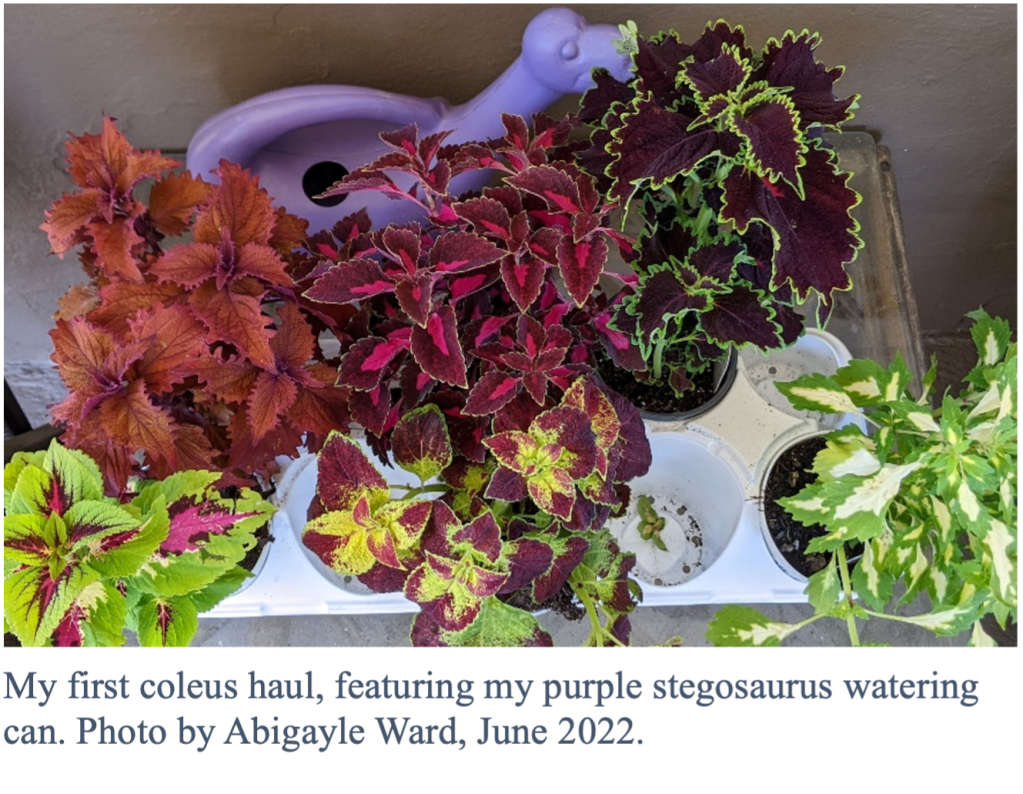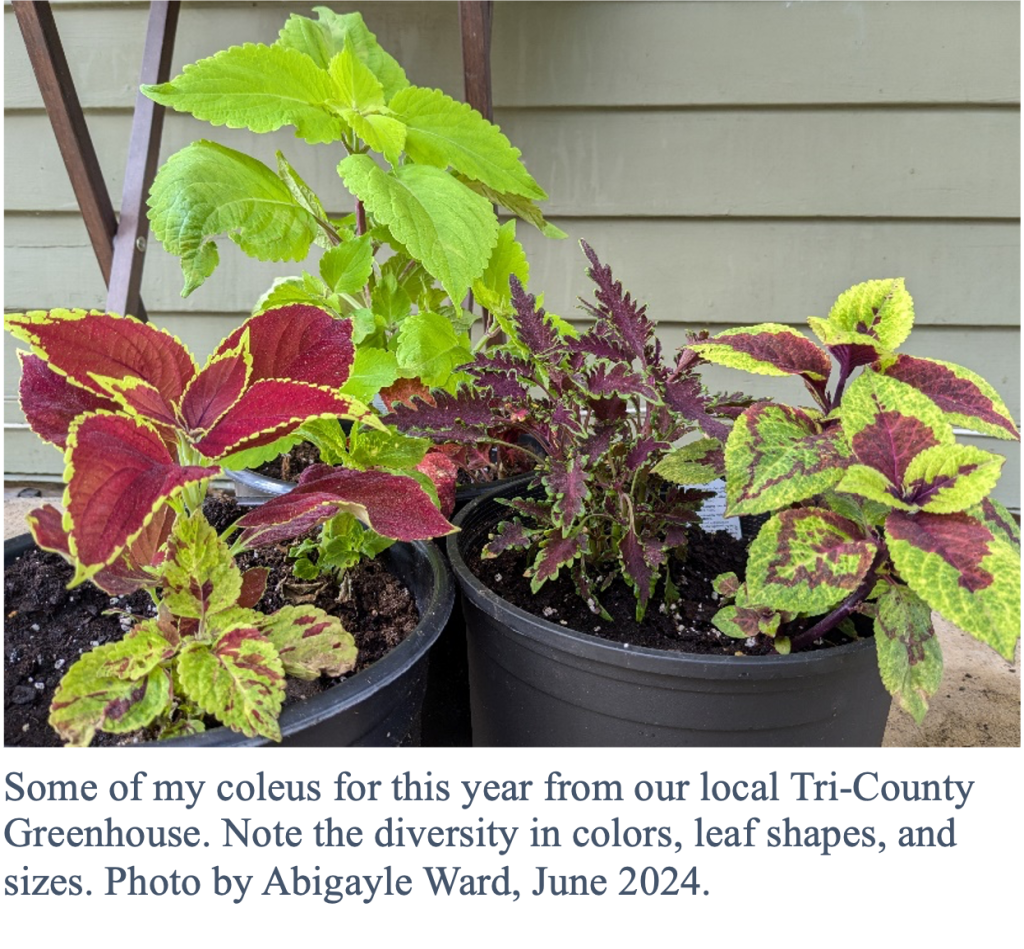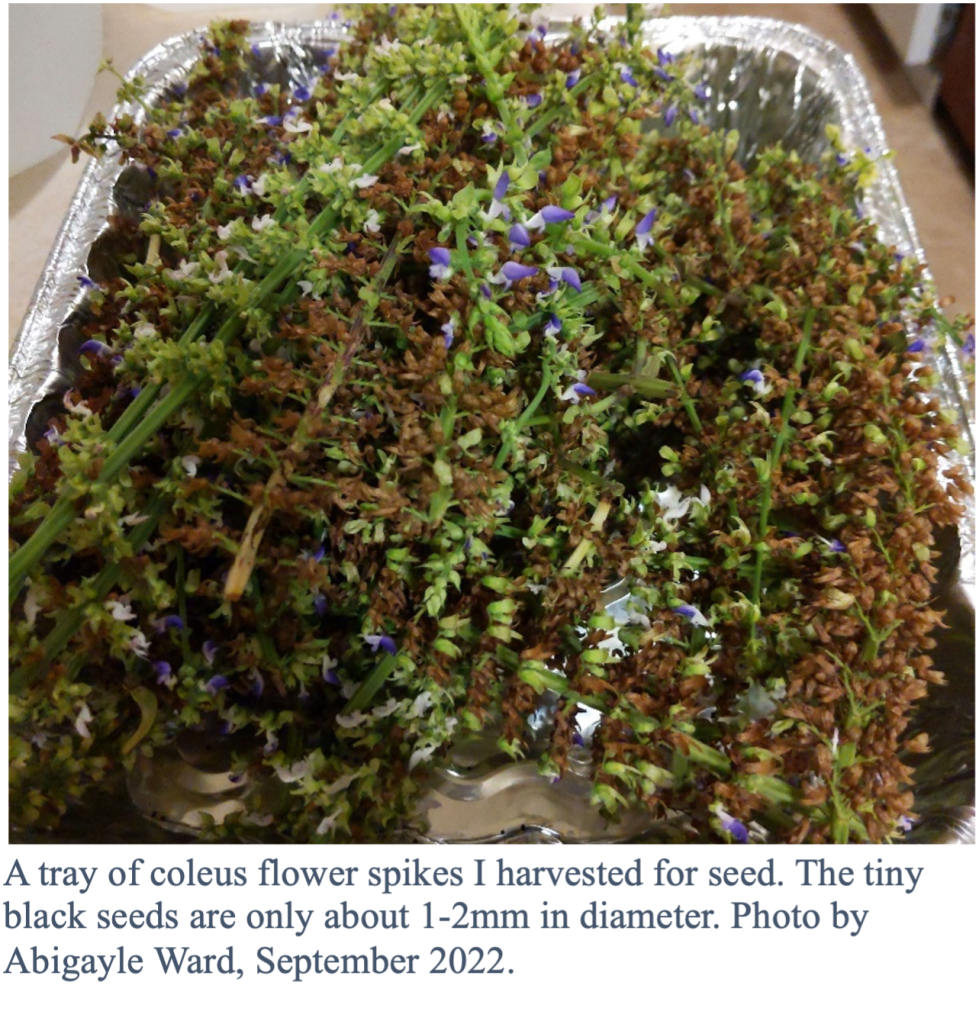In 2022, while I was trying to finish up my chemistry degree, I was trying to brainstorm ideas for a chromatography project and had settled on the idea of separating out and quantifying chlorophylls in hostas. I hopped in my car and drove down to the local garden center, planning to purchase some hostas I could harvest in time for the fall semester. That is, until I was stopped in my tracks by an entire table of coleus.
As a novice home gardener, avid collector of odd-looking things, and super senior with pigments on the brain, these were the clear winner. Hostas forgotten, I purchased 6 coleus plants and brought them home.
With well over 1,000 varieties to choose from, the combinations of colors, textures, leaf shapes, sizes, and growth habits seem endless. For those with an eye for design, coleus could be a wonderful addition to your container garden – Or, they could act as thrillers, fillers, and spillers all on their own!
They can be planted in containers or directly in the ground, although you may encounter less issues with pests such as grubs if you grow them in potting mix. I grow them in containers, and typical pests I’ve encountered include thrips and aphids, although never so destructively that the plant dies.
Since the leaves are the main attraction, coleus may benefit from ocassional additions of nitrogen fertilizer if you are growing them in potting mix. I found that, once the plants are well-established, just a little bit of water-soluble nitrogen can keep them growing brilliant vegetation.
Like others in the mint family, coleus will grow flower spikes when stressed or when it’s close to the end of the growing season. While the tiny white to purple flowers themselves are not showstoppers, the bumblebees and hummingbirds seem to like them quite a bit. You can either cut off the flower stalks before they grow to encourage the plant to grow more vegetatively, or you can leave the stalks and watch as pollinators visit your coleus. The spikes can also be collected for seed once the flower petals start to turn brown. Seeds grown the following year may look nothing like the parent plants, and it’s fun to guess which plants parented the outrageous-looking second generation!
In plant hardiness zones 6a-7b in Connecticut, coleus are very tender annuals. They will grow brilliantly when temperatures are above 60°F, and will experience cold-injury if temperatures fall below 50°F. When temperatures plunge below 40-50°F and overnight frost becomes a possibility, leaves will start to blacken and die.
Coleus propagate very readily by stem cuttings, and will easily root either in water or soil. To overwinter coleus, I like to take stem cuttings of 2-3 leaf nodes, plop them in a jar of water, and leave them until they root. They can stay like this all winter, or can be potted up in small containers with potting mix. Once in potting mix, they have a tendency to grow prolifically, and they should be trimmed back as needed for a fuller, bushier-looking plant.
Now a graduate student studying soil science, my business with separating out coleus pigments using chromatography remains unfinished. However, my love and appreciation for these intriguing oddities persists. Next time you’re at a garden center, consider picking up some coleus and adding them to your home garden.
Abigayle Ward, UConn Grad Student, Soil Science
Dept of Plant Science & Landscape Architecture



